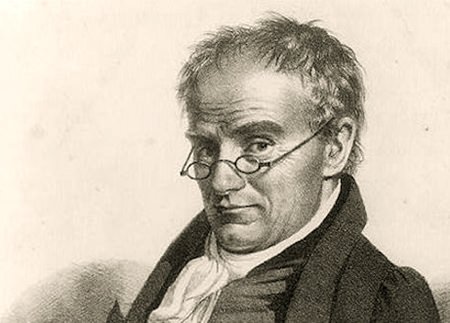
Three hundred and fifty years after the Pilgrims settled in New England, I decided to make a trip there myself but not, you understand, for the same reason. It was my first visit to America and I stayed at an elegant hotel in Boston’s Copley Square. At the breakfast bar the first morning, suffering from mild jet-lag, the serving-lady asked “Over well?” I assumed she was enquiring about the quality of my previous night’s sleep, but it turned out she was asking about eggs. Judging by her bewildered expression, my long response was not quite the answer she expected.
At the time, it hadn’t dawned on me that New England was the home of American music. William Billings was regarded as the first American choral composer. He also lived in Boston and was evidently addicted to snuff. He was described as “a singular man of moderate size, short of one leg, with one eye…and with an uncommon negligence of person.” One of his less scruffy contemporaries rejoiced in the name of Supply Belcher and was one of a group of mostly self-taught composers who developed a unique choral style suitable for amateur local choirs.
Not surprisingly, American orchestral music took longer to develop. The first American composer to write for symphony orchestra was the mildly eccentric Anthony Philip Heinrich. He gave his compositions quaint and rambling titles such as The Dawning of Music in Kentucky, or the Pleasures of Harmony in the Solitudes of Nature. The music had little in common with what was being written in Europe, although one critic referred to him as “the Beethoven of America.”
As the nineteenth century marched onward, a new breed of composers began to emerge who had studied in Europe but returned home to compose, perform, and acquire students. Among them were George Whitefield Chadwick, Amy Beach, Edward MacDowell, and Horatio Parker.
John Adams was born in Worcester, Massachusetts and this thrilling work is an iconic example of his post-minimal style, which uses the characteristic techniques of repetition, a steady beat, and perhaps most importantly, a tonality that relies on consonant harmony.
This is one of Adams’ most approachable works and dates from 1986, when it was first performed by the Pittsburgh Symphony Orchestra. Short Ride in a Fast Machine is a joyfully exuberant piece and brilliantly scored for a large orchestra. The work was going to be performed at the Last Night of the Proms in 1997 but the performance had to be cancelled because of its title. Only a week earlier, Princess Diana had been killed in a very fast-moving Mercedes Benz. The performance was re-scheduled for the 2001 Proms Season but was cancelled yet again after the tragic 11th September terrorist attacks in the USA.
About a hundred years before John Adams wrote Short Ride, one of America’s most influential composers was born, though during his lifetime his music was largely ignored.
Another New Englander, Charles Ives was born in Danbury, Connecticut to George Ives, a U.S. Army bandleader and his wife Mary. As a small child, Charles played drums in his father’s band and at an early age composed a large collection of songs, two string quartets and other chamber music. In 1894, Ives entered Yale University and studied under Horatio Parker. He became a leading student at Yale and also excelled at sport.
Later in life, he was among the first composers to engage in musical experiments which included polytonality, polyrhythm, tone clusters and chance elements. All this was to become commonplace by the end of the twentieth century but it proved too much of a challenge for many of his contemporaries. His music was generally ignored, partly because of the inherent performance difficulties and also because of the relentless dissonance.
This lovely symphony – the first of four – was composed between 1898 and 1902 when the composer was in his mid-twenties. It’s written in a late romantic European style with four movements. The second one is exceptionally beautiful and moving, evoking an atmosphere similar to the slow movement of the New World Symphony. The scherzo is delightful with a tuneful ländler-like trio section, while the last movement is a real tour-de-force with thrilling brass writing, bringing the work to a joyful and triumphant conclusion. You can also find recordings of his later symphonies on YouTube.
Just to put things into perspective, when Charles Ives was born in 1874, the American Express Company had already been in existence for almost twenty-five years. It started out in 1850 as an express mail business in Buffalo, New York.
 |
 |
 |





